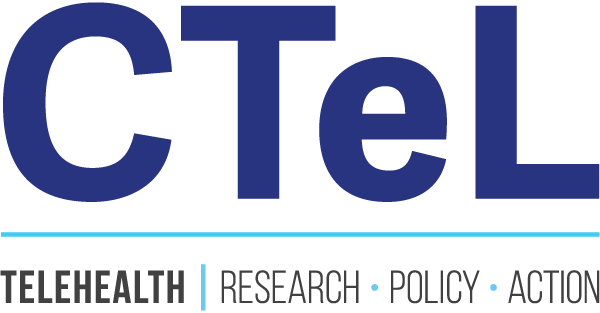Advancing Remote Patient Monitoring: Congressional Insights from CTeL’s Third Annual RPM Summit
Washington, D.C. – This year’s Third Annual Virtual Remote Patient Monitoring (RPM) Summit, hosted by the Center for Telehealth and e-Health Law (CTeL) on November 1, 2024, brought together leaders from legislative offices, healthcare, and technology sectors to tackle the pressing question: How can the U.S. improve access to healthcare through remote patient monitoring and digital health solutions? At the heart of the summit was the session “Congressional Insights on Remote Monitoring Legislation,” featuring legislative aides Tucker Williamson, representing Rep. Neil Dunn (R-FL), and Josh Joffe, representing Rep. Sheila Cherfilus-McCormick (D-FL). Together, they unpacked the current policy landscape and legislative priorities essential to advancing RPM in an increasingly digital healthcare ecosystem.
Definition of Remote Patient Monitoring: is the use of digital devices to monitor a patient's health.
Legislative Priorities for RPM and Telehealth
Remote patient monitoring (RPM) has become more than a tool; it’s a lifeline for patients needing chronic disease management and routine check-ins beyond the walls of traditional healthcare facilities. However, for RPM to fulfill its potential, the U.S. needs legislative changes to make it more accessible and practical.
Tucker Williamson stressed that this is an opportune moment, with recent updates from the American Medical Association (AMA) and heightened interest in RPM among lawmakers.
“One big hurdle we still face is getting the Centers for Medicare & Medicaid Services (CMS) fully on board with the new billing structure,” Williamson shared. “Legislation like the Expanding Remote Patient Monitoring Act (H.R. 5394) could be a game-changer, allowing providers more billing flexibility, filling a gap that currently exists in the code.”
But it’s not just about new codes—it’s about fair compensation for providers. Joffe explained that a streamlined reimbursement process is crucial to incentivizing the use of RPM, both for patients and providers. He also emphasized the need for broadband access to ensure that RPM is accessible to underserved communities.
“Access to reliable and affordable broadband is foundational to RPM and telehealth, especially in rural and medical desert areas,” he said. Without widespread connectivity, these transformative healthcare options are inaccessible to those who may need them most.
The Legislative Bundling Debate: RPM, Telehealth, and AI
RPM, telehealth, and artificial intelligence (AI) each play unique roles in healthcare, but legislative aides at the summit discussed the potential to bundle them within a unified bill. For lawmakers, bundling could streamline the legislative process by combining related initiatives under a cohesive healthcare framework. However, Williamson and Joffe noted the challenges of such an approach, particularly the issue of separate Congressional Budget Office (CBO) scores for RPM, telehealth, and AI components.
“Bundling allows lawmakers to view these technologies as part of a comprehensive healthcare ecosystem,” Williamson explained. “But it complicates cost estimates and could create roadblocks.” Despite these hurdles, bundling legislation presents an opportunity to build a holistic solution that captures RPM’s full potential, he added.
Incorporating AI into healthcare legislation is a particularly promising area. “AI is designed to improve provider efficiency, and if we can show that it reduces costs, bundling it with RPM and telehealth makes sense,” Williamson explained. Joffe added, “AI can streamline data from smart devices, minimizing ‘white noise’ and ensuring that only critical health data is prioritized for clinician review.”
For information on CTeL’s AI Blue Ribbon Collaborative, visit our website.
Educating Lawmakers: Raising Awareness on Capitol Hill
For RPM to advance, legislative understanding is essential. Williamson and Joffe acknowledged that, despite RPM’s immense promise, there’s still limited knowledge among many lawmakers about how it differs from traditional telehealth. “We often use the terms interchangeably, but it’s essential to educate lawmakers on the differences,” Joffe said. “Telehealth is episodic care, while RPM provides ongoing monitoring, offering immense potential for managing chronic diseases.”
“We often use the terms interchangeably, but it’s essential to educate lawmakers on the differences,” Joffe said. “Telehealth is episodic care, while RPM provides ongoing monitoring, offering immense potential for managing chronic diseases.”
With 435 representatives, educating each one on RPM’s capabilities and benefits isn’t easy. “Educating members and staff is crucial for crafting legislation that accurately reflects RPM’s unique benefits and needs,” Williamson stated. Without adequate understanding, legislative decisions may overlook RPM’s real value, stifling its potential impact.
Federal and State Policy Alignment: Navigating the Complexity
Federal and state policies must work together for RPM to succeed, particularly when it comes to AI in healthcare. CTeL has created a collaborative of experts from leading institutions like Harvard and UC Berkeley, seeking solutions for integrating AI into RPM systems. As Williamson emphasized, “Hearing from experts in medicine, technology, and law is invaluable to us. We need guidance from those at the forefront to navigate complex regulatory environments, especially when it comes to aligning state and federal frameworks for RPM and AI.”
Joffe echoed the need for private stakeholders and policymakers to work closely, explaining, “We’re not working in isolation in Washington. Input from providers, patients, and state-level officials is essential to ensure that our legislative solutions are effective, adaptable, and, most importantly, safe.”
A Call to Action for Early Legislative Efforts
Both aides underscored the importance of timing, especially as the new 119th Congress convenes. Williamson highlighted the critical opportunity presented in the first “100 days of the next administration.” During this window, he emphasized, there’s a chance to move key RPM and telehealth legislation forward.
For CTeL and the broader RPM community, the summit served as a call to action, illustrating that collaboration, education, and timely advocacy can significantly impact the direction of healthcare policy. The stakes are high, but so is the potential to transform patient care in ways never before possible.

